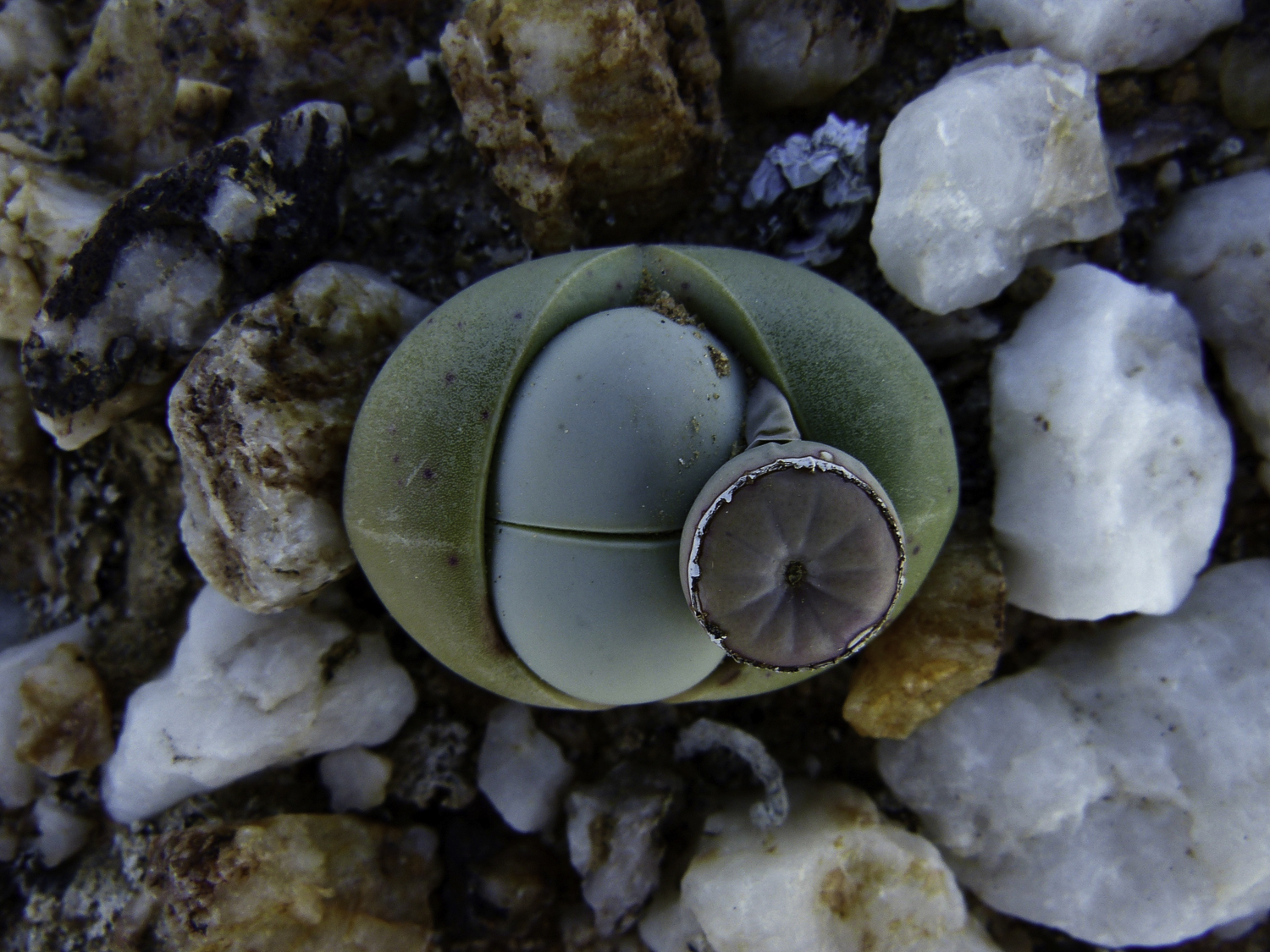ePostcard #14: Hidden Water (Namibia and South Africa)
The ability to locate a hidden spring or waterhole—reading the landscape and recognizing subtle clues—is a survival skill that must be learned by all desert dwellers at an early age. In Namibia’s northeastern Kunene region, which receives less than 4 inches of rain a year, the indigenous Himba people follow a subsistence lifestyle and have managed to survive in one of the most extreme environments on earth. While modern life and cultural tourism is inexorably fraying the edges of this proud agricultural and hunting economy, it appears that daily activities have changed very little in the collection of homesteads that make up the communal village of Omuhoro. Every day, the older women of the village walk for miles to collect firewood and water, the men work the fields and hunt, and younger women focus on cooking enough food for the 30 or so villagers. As seen here, gourds are still used to carry personal water supplies. Himba women are known for their beauty but also for their dramatic red braids and giraffe-like topknots. In a land where bathing water is a scarce commodity, Himba women make a rust-hued emollient mixture from animal fat, ash and red ochre pigment that they spread on their bodies—a traditional beauty ritual that serves not only to to cleanse the skin without water, but also provides a durable skin coating that protects them from insect bites and the drying effects of a witheringly hot climate.
The primary sources of water for most desert-adapted predators, in the absence of standing water, are the moist tissues and blood of their prey. Grazers and browsers “make water” metabolically from the plant tissues they eat, and succulent plants are especially attractive. Succulent plants have visibly swollen leaves and stems that serve as water storage “vessels” for extended periods of time. The leaves and stems also have a thick, waxy outer layer, or cuticle, which provides a mostly waterproof barrier that minimizes water loss. Some succulents have a covering of fine hairs or large spines that help shade leaves or stems from the sun and insulate the plant from desiccating winds.
Succulents of the genus Lithops, the endemic “stone plants” found in southern Africa, consist of a single pair of fleshy leaves above ground and a squat stem and root system that remains submerged underground as an adaptation for conserving water. When a stone plant needs to grow a new pair of leaves, most species recycle tissue-stored water by withdrawing these fluids and nutrients directly from the old leaves, which remain totally withered. This unique adaptation enables stone plants to survive for several years without relying on re-hydration from external sources. These little succulents also blend in well with their pebbly surroundings, which helps them avoid being eaten by succulent-loving herbivores, such as the bush cricket, Cape porcupine, and Cape ground squirrel. Stone plants have translucent “leaf windows” on the exposed leaf surfaces of the plant that allow light to reach the photosynthetic tissues in the underground portion of the plant. Recent research reveals that Lithops optimize above-ground and subterranean photosynthesis by sealing off vulnerable plant tissues during the day to reduce water loss, concentrate chlorophyll to take maximum advantage of incoming light for photosynthesis, and synthesize a biochemical sunscreen to block out harmful UV light. A pretty complex system for such a simple looking plant!
To help build global awareness, we would appreciate it if you would share this post with your friends and colleagues. Please choose one of the options below which includes email and print! Thank you.








I’m glad that at least some organisms have a jump on living in the extreme environments that we humans are in the process of imposing more broadly on the planet. It’s also great to know the back story on this cute little plant, which I’ve only known from grocery-store offerings in tiny pots that catch the eye of my son. I broke down and bought some little plant for him once that has since outgrown his attentions as wells as several, increasingly larger pots. I wish I’d steered him toward this little gem, instead!
Great back ground info about the Hima tribe, their way of living. great images and explanation about the little stone plants. Thank you